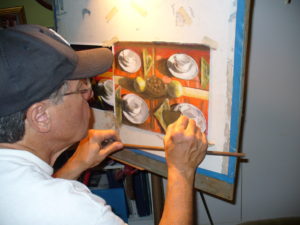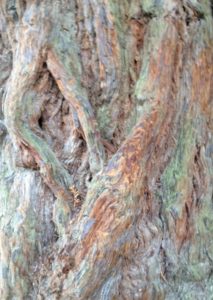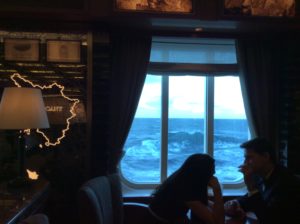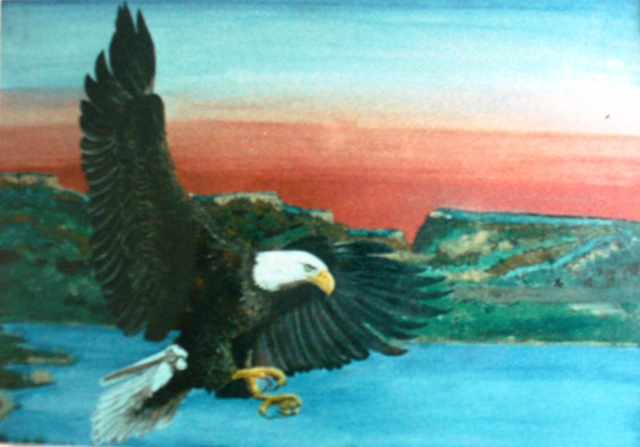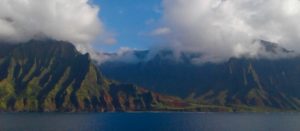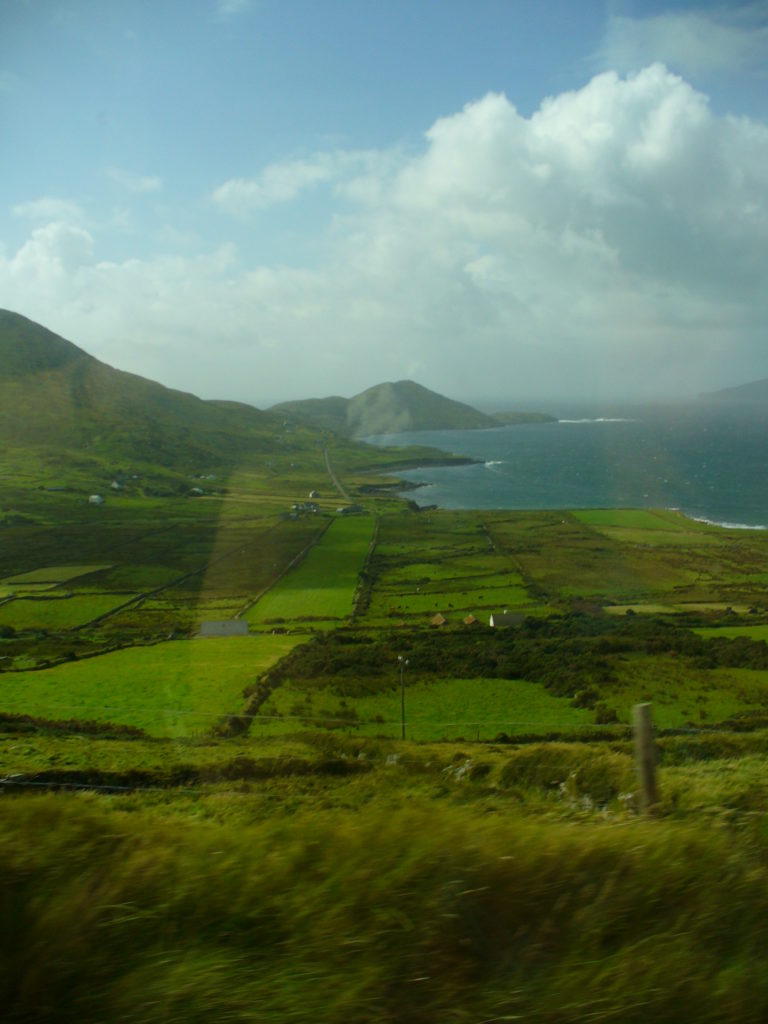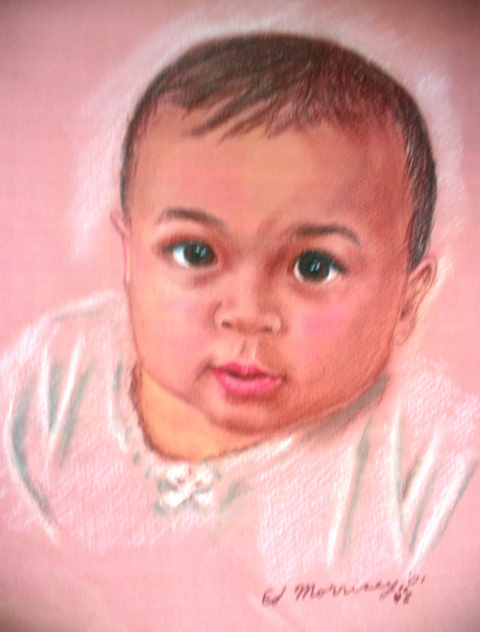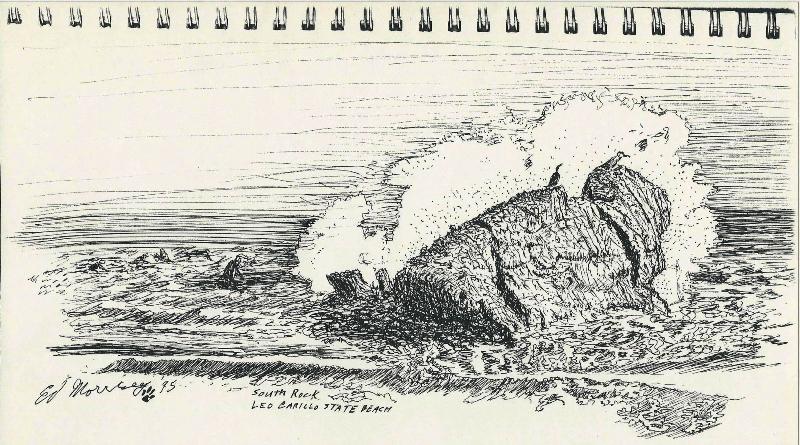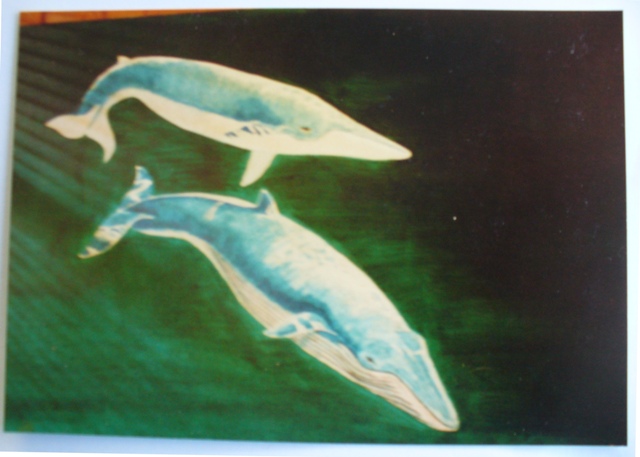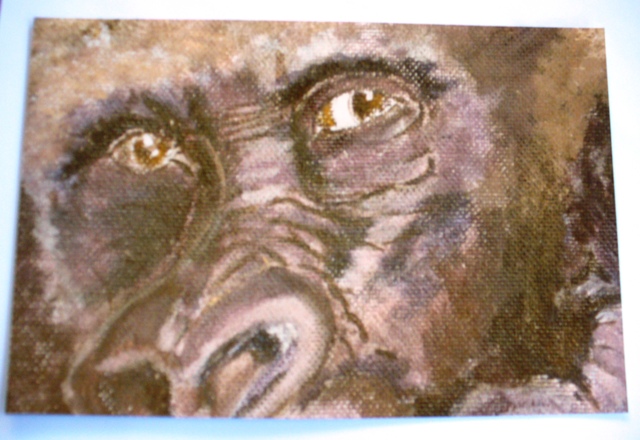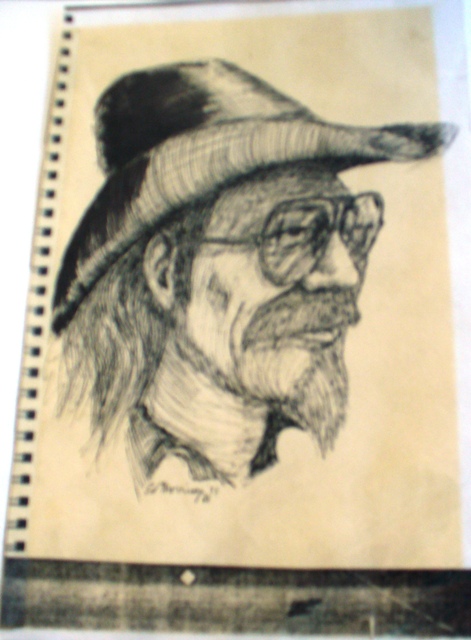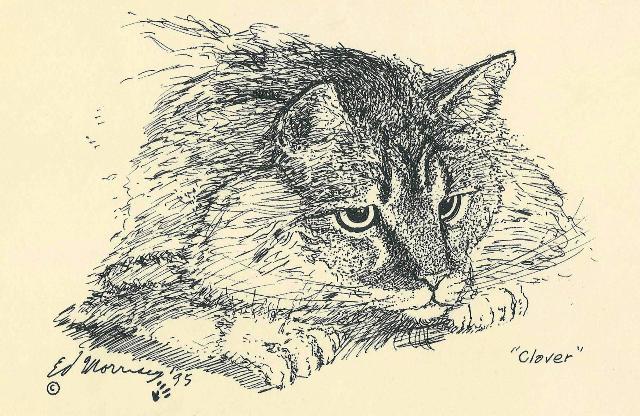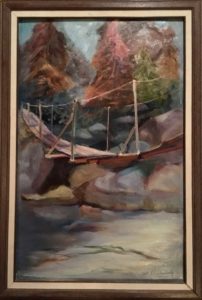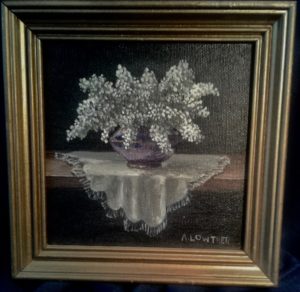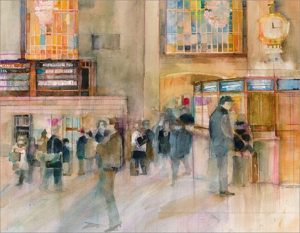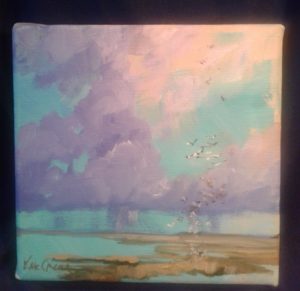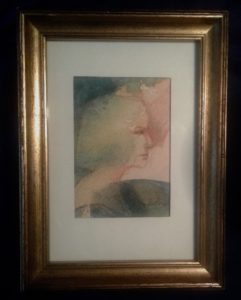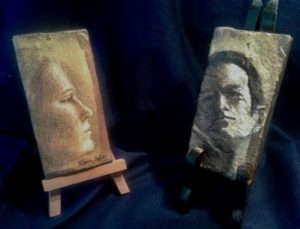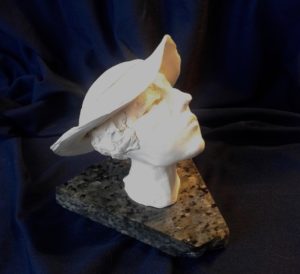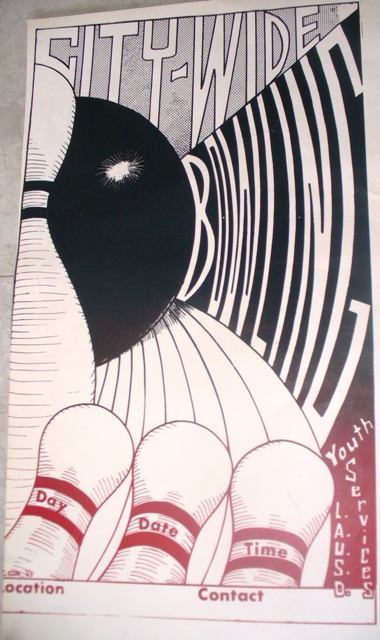“Tell me, what is it you plan to do with your one wild and precious life?”
quotation from poem by Mary Oliver.
With all the madness unleashed in our world, thank goodness, I don’t run to the frig when I’m upset. I read, i.e., these days I mostly listen to books.
I signed up with Goodreads, a "social cataloging website that allows individuals to freely search its database of books, annotations, and reviews.” Aiming to be organized in my approach to reading, I assigned myself the outsized 2018 goal of reading 100 books. For a person who has always tended to count gym circuits, swim laps and bike miles, the site is as handy as a Fitbit and far less strenuous. In December, looking at the Goodreads stats sent in an email, I saw I had gotten 75% there. Like my 10-year old self, blissfully walking home from the library, a stack of books piled to my chin, my eyes still tend to be bigger than … you know.
Of the books I read, fiction on best-selling lists too often earned my dimmest views and fewest star ratings. I did get hooked on “Big Little Lies” by Australian author Liane Moriarty – book and television series. And, I boarded more than one ferry to Nantucket or Martha’s Vineyard with Elin Hilderbrand to hear how some rich woman fell for a hunky local carpenter or gardener or whatever. I happened upon gems by relative unknowns and followed Amazon five-star commenters to a dozen books, only to end up with a two-star “Meh.”
Rather than waste your time on snark, I offer notes made about a baker’s dozen of nonfiction and fiction books. In my “one wild and precious life,” I will track down such books and write whenever I’m not on the move. As the saying goes, “Buckle up.” Great reads could be a healthy diversion and no-calorie route through your new year.
Note: Speaking of being on the move: My husband, Vincent Mancuso, was prompted to do the painting of Muir Woods after seeing (and hugging) a thousand-year old coastal redwood in California in March. The acrylic work is called "10 x 100 Years" and was shown at the St. Petersburg Morean Arts Centers' 100th anniversary exhibit.
Nonfiction
The Three-Year Swim Club: The Untold Story of Maui's Sugar Ditch Kids and Their Quest for Olympic Glory
by Checkoway, Julie
This book by Julie Checkoway ranks with "The Boys in the Boat" as a masterful tale of human endeavor in sports. Both nonfiction works describe athletic triumphs achieved at great personal cost in the 1930s, with the Three-Year Swim Club moving through later years.
The author seems so well acquainted with competitive swimming, I assumed she had personal experience with the thousands of hours swimmers devote to achieving mastery. Ms. Checkoway is simply a great writer with thousands of hours logged in her writing craft and research.
Her turn of phrase made me smile. For example, she described sports writers covering an amazing swim event as staying up way past their bedtimes “swatting at their typewriter keys.” Such artful description occurs again and again. She also refers to tidbits of the lively sports writing of the era and to local Maui newspapers in her first-rate reporting and writing. This is a thoroughly engrossing story that gives one hope for the human race.
A History of the World in 100 Objects
by Neil MacGregor
As a BBC Radio 4 and British Museum 100-part radio series written and presented by British Museum director Neil MacGregor, it's taken time to finish this unique audio book, mostly while driving. The program should be savored for its object choices and keen observations. The writing is very fine, as are contributions from experts in the history of different periods and places. I've learned a lot I never would have considered - about the "Iron Age nouveau rich" onward to the 2000s.
On a Farther Shore: The Life and Legacy of Rachel Carson, Author of Silent Spring
by William Souder
Well documented biography of the much-maligned, courageous Rachel Carson who warned of the dangers of over use of pesticides and of radiation from above-ground nuclear testing. Considering the current political environment, with threats of launching strikes against a country with nuclear weapons, it is a sober read. Rachel would not be shocked at the apparent lack of concern over radiation and nuclear fallout. It didn't faze a lot of people in the 1950s and 1960s, despite the ill effects on humans, animals and the planet. I recall the taste the pesticides sprayed over populated areas back then. The author of the biography claims that decades later chemical companies game the regulatory system to keep getting approved for use. All I can say is, "Thank you, Audubon Society, Sierra Club, Natural Resources Defense Council and all forces who speak for Rachel today." See also: Two Thoughts: Venturing out and into the Mind
Feel Free: Essays
by Zadie Smith
In her recent book of essays, writer Zadie Smith interviewed rapper Jay-Z and quoted Big L Larry Coleman in a way that made me stand up and notice rappers – one a dude I may have heard of in passing and the other I tagged as husband of Beyoncé. Big L said, “I’m so ahead of my time, my parents haven’t even met yet.”
The fact that rappers go deep was new to me. Rap is a music wave I never attempted to ride, not in the 1990s and not today. (After reading more Big L quotes, turns out he wasn’t known for saying anything else that wasn’t fatally obscene to me.)
Smith’s comments about the brilliant improv comics Key & Peele reminded me just how excellent they are at assuming the interior life of other characters. Famous for the Obama Anger Translator skits and both biracial, it was Key who, on a gap-year trip to England, observed a very different black experience and the way blacks are perceived: “It’s all cultural. None of it’s about melanin.”
An Ivy league professor, Smith defends the public library as “The only thing left on the … street that doesn’t want either your soul or your wallet.” A London daughter of a Caribbean mother and much older British father, she approaches the touchy subject of Brexit from afar, on a trip to Northern Ireland, which, like Scotland, was royally shafted by the plan and then shares remarks from her mother, who said an old white women announced to a multiracial group on a London street that now they’ll all have to go. Smith offers so much food for thought she makes me picture a chef with an appetite for exotic ideas, a pantry filled with the best words and an assortment of carving knives for her rapier wit.
The Order of Time
by Carlo Rovelli
Like many reviewers, I was struck by theoretical physicist Carlo Rovelli's ability to express complex theories beautifully and by my struggle to grasp them.
In the comedy movie "Defending Your Life," humans are referred to affectionately as "little brains." That's about where I stand. I do like my science mixed with a poetic turn of phrase and lots of quotes by great thinkers. I do not expect to join that group by mere exposure to great ideas, but I will appreciate the exposure, admire the thoughts and cling to the evidence that many humans revel in thinking. In today's deplorable, anti-intellectual climate, I find books such as this comforting. I will read it again ... and again.
Wolf: The Lives of Jack London
by James L. Haley
Fascinating story of Jack London's life and works. I appreciated the research into London's adventures at sea and in reporting the San Francisco earthquake/fire and foreign wars and in the hustling he had to do to make a living and support loved ones.
For All the Tea in China: Espionage, Empire and the Secret Formula for the World's Favourite Drink
by Sarah Rose
A breezily written account of world history that offered a lot of facts that were new to me. I enjoyed the main story of Robert Fortune’s rogue journey into forbidden parts of China to collect tea seeds and leaves and his attempts to start up the business in India. Following the author’s many side bars became challenging. The unexpected story of the term “bite the bullet” with its demand that 19th Century Indian soldiers lick pork and cow fat lubricating their bullets demonstrates the brutal cost of cross-cultural ignorance, ending as it did in massacres. Whatever colonization and theft of the China tea industry gained for the West in tea was more than lost in tales of human slave trade and drug traffic. The audio would have benefited from a professional narrator. The author’s voice is far too cheery and upbeat for the trickery and human misery her research reveals.
Island of the Lost: Shipwrecked at the Edge of the World
by Joan Druett
A remarkable story of two shipwrecked crews on opposite sides of the same desolate island south of New Zealand in the 1860s. One group more than survived due to the leadership of a competent captain who kept a log while most of the hopeless, poorly led other group perished. The author tells of the valiant captain's ingenuity, courage and a refusal to despair when pitted against terrible conditions versus surrender to circumstance by a group that lacked direction. Well researched newspaper accounts and diaries. A gripping read.
Take You Wherever You Go
by Kenny Leon
Kenny Leon offers an insightful memoir and stories of acting and modern theater life. A native of Florida, he occasionally put me in mind of Andrew Gillum, who ran for and lost the 2018 governor's race, particularly in both men’s comments about the influence of a beloved grandmother.
As a northerner who has been exposed to the bruising inequality faced by black men and women in the south, I admire Mr. Leon’s courage, grace and perseverance. Some sweet day, racial prejudice must fade. It hasn’t yet. I was happy to read how his St. Petersburg high school experience markedly changed the course of his life and how hard he worked to meet the requirements of programs offered. No one handed him anything, but he ran with his opportunities. His book contains many life lessons and interesting stories of theater greats, including the brilliant playwright August Wilson.
My Girls: A Lifetime with Carrie and Debbie
by Todd Fisher
Todd Fisher’s book brims with well-told and interesting family stories. His childhood alone is a marvel of indulgence, wild dreams coming true versus the pain of his father’s indifference. Todd’s love is palpable, making unflattering revelations about his brilliant bi-polar sister simple fact. He and Carrie Fisher made their way through a mine field of disappointment that must have tried their faith in others. Debbie Reynolds experienced jaw-dropping betrayals. How they all kept going in is remarkable. A lively and thought-provoking read.
Fiction
Lillian Boxfish Takes a Walk
by Kathleen Rooney
Cleverly written day in the life of a feisty 84-year old New Yorker. Thoroughly original. Quirky. Captures 1980s Manhattan in simple human exchanges.
How to Get Filthy Rich in Rising Asia
by Moshin Hamid
Mohsin Hamid has come upon a brilliant way to convey the drive to succeed that is our human birthright. He addresses the reader as if he or she is confronting the main character's dilemmas, fears and turning points. His compassion is simply breathtaking. I hope to read more of his work.
My Name Is Lucy Barton
by Elizabeth Strout
Reading this book is like listening to a seat mate in a darkened plane while on a red-eye flight. The woman shares wrenching details of an anguished childhood and of her adulthood as it unfolded. The temptation is to nod and listen. Questions do come to mind about motherly love and fatherly insanity; but, in the end, I’m inclined to marvel at her will to survive and thrive.
Fin & Lady
by Cathleen Schine
Fin Lady by Cathleen Schine, a novel that takes place in the 1960s in the wealthier environs of Connecticut, Manhattan and Italy’s Isle of Capri, is a delightful read. Connecticut and Manhattan always interest me as story locations. As a person long ago enchanted by Capri, I thought Ms. Schine’s depiction of the island’s allure was near perfection. How lovely to be back in Capri in her shimmering prose.
The Lady of this story proves enchanting to all who meet her. Her pithy observations smack of Dorothy Parker in a prior era. Her restlessness serves as an underlying tension throughout the book, especially to the dependent, young brother Fin. I found the mystery of the narrator challenging but ultimately satisfying. The author's command of the English language is superb.
Beware: Deplorable
12 Rules for Life: An Antidote to Chaos
by Jordan B. Peterson
As a recent MP3 offering on Overdrive, I found the book surprisingly heavy handed on a “woman as chaos and man as order” theme. Seems that’s the way it was for centuries, and that’s the way it always will be. Like the flat earth theory.
Given the current chaos generated by the allegedly manly occupant of the Oval Office, that notion about women didn’t quite seem scientific coming from a trained professional. Next came Peterson’s stroll into the Old Testament and Genesis. So what do we have brewing here? A misogynist, religious tome? Worse.I pressed the Pause button long enough to skim the reviews of 1-Star Goodreads commenters and found ample evidence of unbelief in Peterson’s creds as a scientist or a modern human being. As to a master of the healing arts, his is what I call the “Snap out of it!” school of therapy.
As an internet celebrity since 2016, he’s making money hand over fist with crowdfunding and by bolstering the egos of dejected young men who wouldn’t mind forcing women to marry them if the men aren’t doing well making a living and fear they’ll miss that woman boat.
Since I sometimes attempt to listen to the right wing to learn what’s on their 13th Century minds, I considered plowing through this book. But I do not believe this guy is on a beneficial track, nor is he the first sage to approach the topic of living life well. Dr. Wayne Dyer, author of “Your Erroneous Zone,” which sold 35 million copies, also spent decades reminding people to take responsibility for their actions and to be compassionate. Though Peterson talks of human suffering, he has no use for those who suffer. He doesn’t seem to know what to do with modern women either. Even the book's title begs credulity. If women represent chaos, Peterson’s rules are an antidote to women.
Also giving me pause: Millions have read Peterson’s book and watched his online performances, just as millions watch Fox News.
